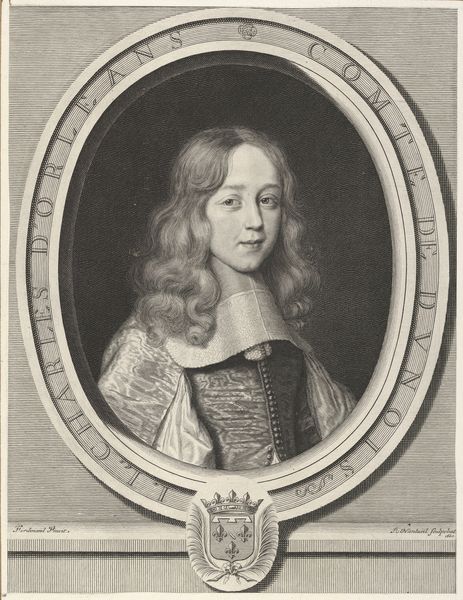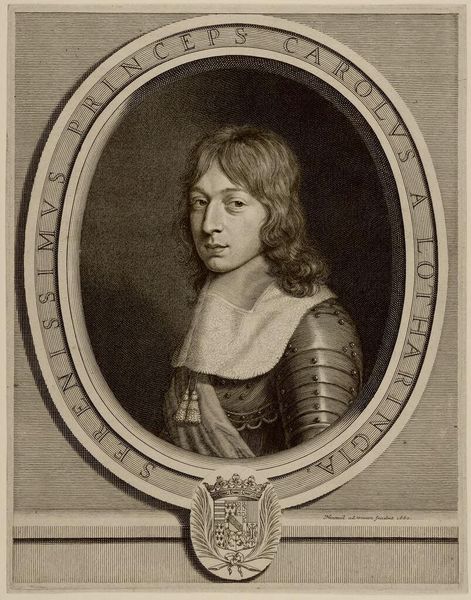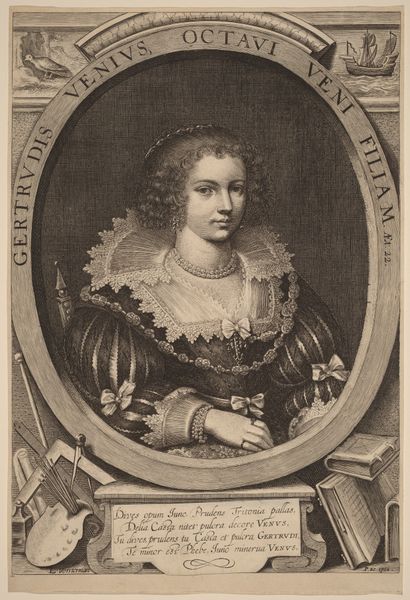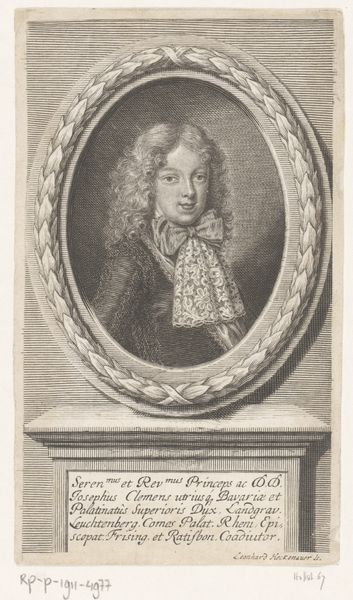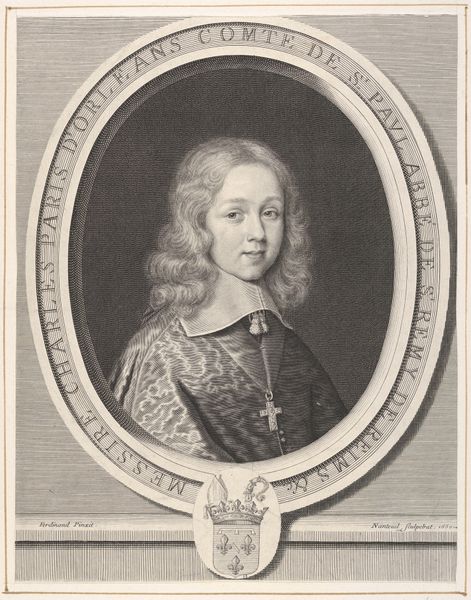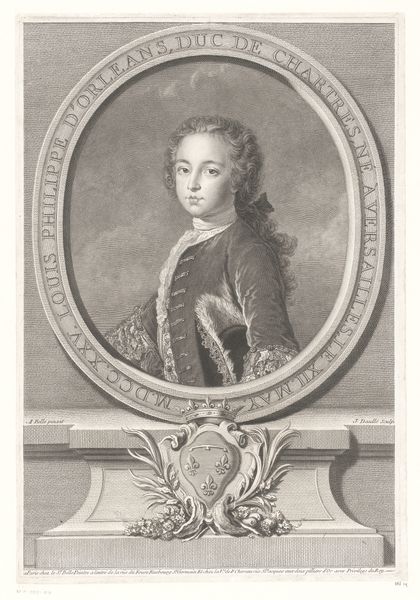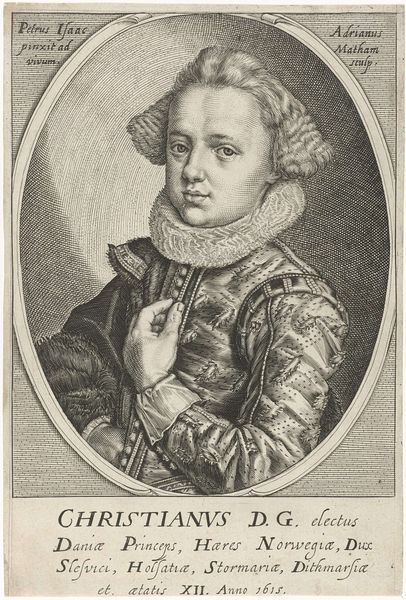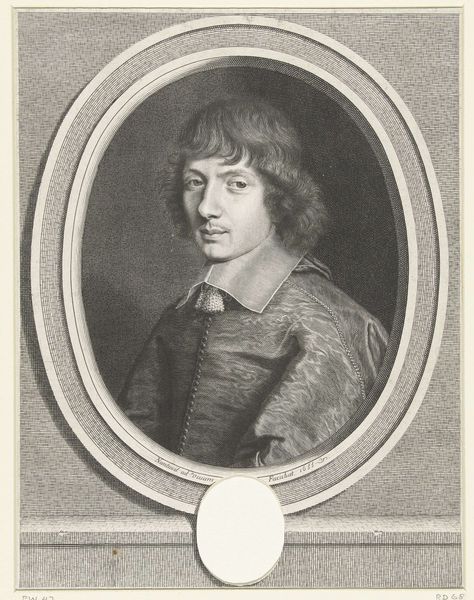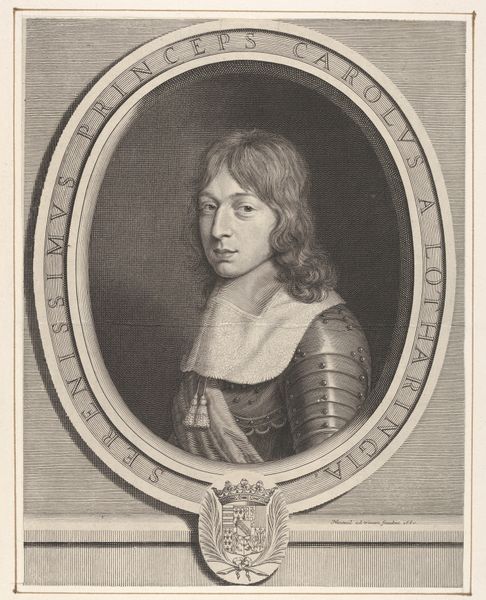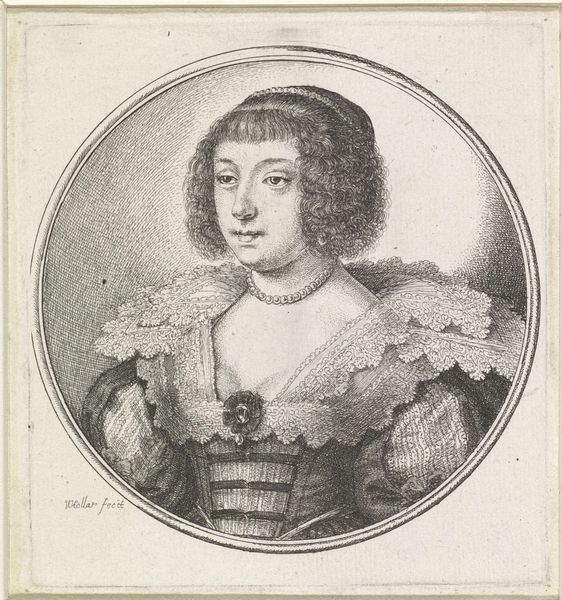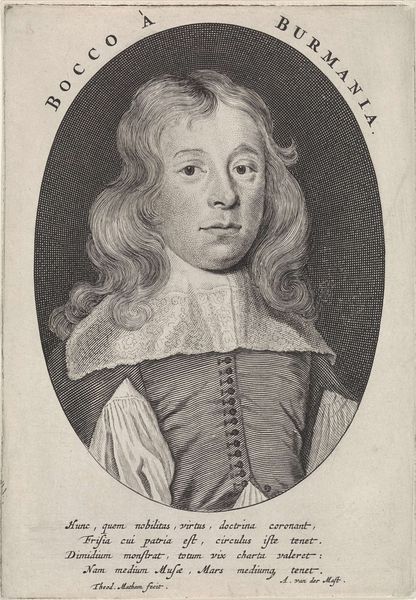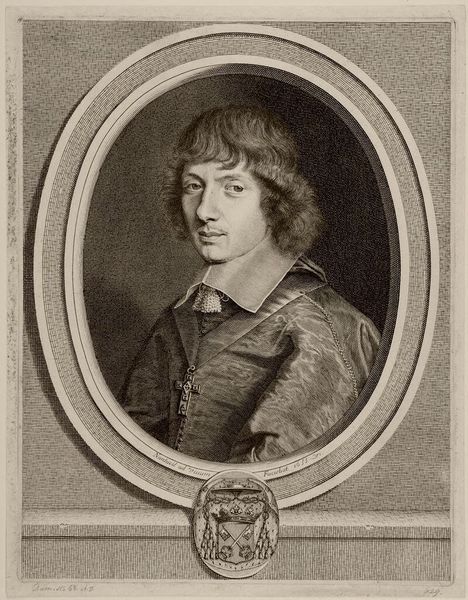
engraving
#
portrait
#
baroque
#
charcoal drawing
#
portrait drawing
#
history-painting
#
engraving
Dimensions: height 349 mm, width 276 mm, height 34 mm, width 278 mm
Copyright: Rijks Museum: Open Domain
Curator: Welcome. Before us is an engraving from 1692 by Pieter van Schuppen, titled “Portret van Jacobus Frans Eduard, prins van Wales als kind,” housed here at the Rijksmuseum. Editor: My eye is immediately drawn to the way light is handled. Despite being a monochrome print, the artist really captures the velvety textures of the fabrics and the soft curls of the child’s hair. There’s something about the medium and how its lines delineate luxury in such stark terms, as well. Curator: Indeed. Observe how van Schuppen utilizes the engraving technique. The density and direction of the lines sculpt the form, giving the prince's face a cherubic, almost luminous quality against the darker background. The oval frame containing the portrait adds to the classical feel, doesn’t it? Editor: Yes, but the dedication to Mary, Queen of Great Britain feels almost subversive given the political climate and James's claim to the throne that she usurped. Looking at it from the perspective of production, the act of creating an engraving-- requiring skilled labor and a press for replication-- points to a very specific distribution strategy aimed to influence political opinion on the material level. Curator: I understand that impulse, but note how carefully he constructs the visual elements, from the inscription to the placement of the crown and ermine. The composition serves to present the young prince as a legitimate heir, imbuing him with dynastic authority. It's an assertion of power through portraiture. Editor: Agreed. The portrait, itself, functions almost like propaganda through the lens of materiality. Considering its origins and the social conditions, this isn't simply a picture of a cute kid in fancy robes, but it reveals a lot about production as part of early-modern political maneuvering. Curator: It's fascinating to analyze how the artwork presents layers of meaning and manipulation through strategic compositional and textural choices. Editor: And seeing it embedded in the broader context of print production highlights the political urgency with which these images of power are made.
Comments
No comments
Be the first to comment and join the conversation on the ultimate creative platform.
